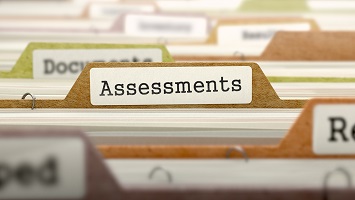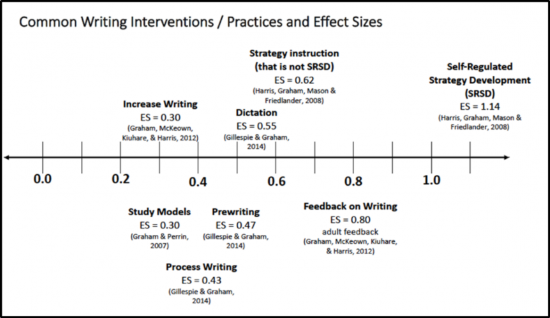Why is it important to think about the type of feedback we give to our students on their work? According to John Hattie (2015), his review of the effect sizes of 195 influences on student learning showed that effective feedback is “among the most powerful of influences.” However, Hattie warned that ”Effect sizes from these studies show considerable variability, meaning some forms of feedback are more powerful than others.” How can we give effective and powerful feedback to students that improves learning?
According to an article by Grant Wiggins, Seven Keys to Effective Feedback (2012), effective feedback is 1) goal-referenced; 2) specific and actionable; 3) user-friendly; 4) timely; and 5) on-going and consistent. It is also based on formative assessments and includes opportunities for students to apply the feedback to their work. Effective feedback is not advice or praise; effective feedback lets the student know specifically what they did correctly and what they need to do to improve the work so they meet the goal or objective of the lesson or project.
Let’s look more deeply at each of the characteristics of effective feedback mentioned above, and what Wiggins means by each.
Goal-Referenced
In order to provide effective feedback teachers must have a clear objective for the work and must make sure that students understand it. The objective should be explicitly stated at the beginning of the lesson, repeated throughout the lesson and restated at the end of the lesson. Students should also understand the criteria for assessment for each objective.
Specific & Actionable
Effective feedback is tangible, specific, and explicit; in other words, it provides the learner with actionable information for improvement.
Students should hear what they did correctly as well as what needs to change. Feedback like grades or praise statements (e.g., “Good job!”) do not give the student information on what was done correctly or what is needed to improve.
User-Friendly
Effective feedback is not only precise but is also simple and easy to understand. It is important to provide feedback on only one or two high impact actions to take at a time; if the student is overwhelmed with feedback, it will not be actionable.
Timely
Effective feedback is provided sooner rather than later, so that the work is fresh in the student’s minds and so the student can take immediate action. Technology can be a great way for students to get timely feedback as is peer-to-peer review. The latter requires explicitly teaching students how to give effective feedback.
Ongoing & Consistent
Effective feedback is not only timely but is also ongoing. Students are most likely to sustain improvement in response to repeated informing feedback. Teachers can work together to become consistent in their feedback, developing highly descriptive rubrics which are then taught to students, ensuring they know exactly what is expected of them across disciplines and classrooms. These rubrics can be taught with anchor products, exemplar papers, and/or displays, allowing students to clearly see what is expected. Students can then also use these rubrics and exemplars in peer-to-peer reviews.
So how can we master this strategy of giving students effective feedback? Wiggins suggests the following important structures:
–> Formative assessments throughout the school year; fall and winter work should be scored against spring standards; and
–> Pre- and post-assessments of lessons that measure progress towards standards.
In today’s busy classrooms, how do teachers find the time to conduct on-going formative assessments and provide effective feedback like this? Wiggins says we have to make the time because, “as we have seen, research shows that less teaching plus more feedback is the key to achieving greater learning.” Schools that commit to providing effective feedback in every lesson through teachers, support staff, peers and technology are creating a powerful culture of learning and on-going student improvement.
References
Hattie, J. (2009) Visible learning: A synthesis of over 800 meta-analyses relating to achievement. NY: Routledge.
Wiggins, G. (2012). Seven keys to effective feedback Educational Leadership, 70(1), pp. 10-16.




 Data-Driven Decision-Making
Data-Driven Decision-Making  Increasing Post-School Success through Interagency Collaboration
Increasing Post-School Success through Interagency Collaboration  How Can We Improve Deeper Learning for Students with Disabilities?
How Can We Improve Deeper Learning for Students with Disabilities?  Positive Classroom Management: Creating an Environment for Learning
Positive Classroom Management: Creating an Environment for Learning  Self-Determination Skills Empower Students of All Ages
Self-Determination Skills Empower Students of All Ages  Fidelity of Implementation: What is it and Why does it Matter?
Fidelity of Implementation: What is it and Why does it Matter?  Rethinking Classroom Assessment
Rethinking Classroom Assessment  A Three-Step Approach to Identifying Developmentally Appropriate Practices
A Three-Step Approach to Identifying Developmentally Appropriate Practices  Transforming Evidence-Based Practices into Usable Innovations: A Case Study with SRSD
Transforming Evidence-Based Practices into Usable Innovations: A Case Study with SRSD